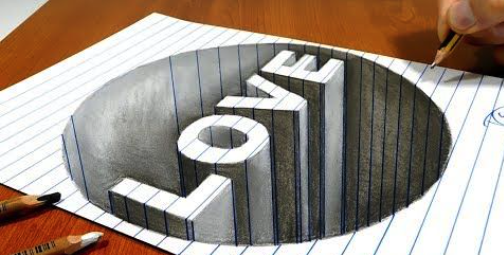3D Art
contents
What is 3D art?
What medium is best for 3D art?
How to master 3D art?
Is 3D art for people who already can draw very well?
How do I start doing 3D art if I do not have any art foundation?
What is 3D art?
3D art, also known as three-dimensional art, refers to any form of artistic expression that involves the creation or representation of objects or scenes in three dimensions. It is different from traditional two-dimensional art, such as painting or drawing, which is confined to a flat surface.

Photo credit: https://www.pinterest.com/

Photo credit https://news.cgtn.com/
In 3D art, artists work with various materials and techniques to produce sculptures, installations, models, computer-generated graphics, and other three-dimensional objects. These artworks can be created using a range of methods, including carving, molding, casting, welding, assembling, or digitally modeling and rendering.
3D art allows artists to explore depth, volume, texture, and spatial relationships, giving their creations a sense of realism or abstraction in physical or virtual space. It can be created using a variety of mediums, such as clay, stone, metal, wood, glass, paper, plastics, or even digital tools and software.
With advancements in technology, 3D art has expanded its horizons to include digital sculpting, computer-generated imagery (CGI), virtual reality (VR), and augmented reality (AR), enabling artists to create immersive and interactive experiences for viewers. Overall, 3D art encompasses a broad range of creative possibilities. It allows artists to experiment with form, material, space. Thus, inviting audiences engaging with art in new and exciting ways.
What medium is best for 3D art?
There are many mediums that can be used for 3D art. It will depend on firstly, personal choice and preference. Secondly, the effect you want to achieve. And thirdly, the surface you are working on.
Here aresome popular mediums for 3D art:
- Graphite pencils: Graphite pencils are a classic medium for 3D art. They can use to create a wide range of tones, from light to dark. And it can blend to create smooth transitions.
- Charcoal: Charcoal is a great medium for creating bold and expressive 3D art. It is ideal for creating rough, organic, or smoky textures.
- Colored pencils: Colored pencils can use to create a range of 3D effects. They are great for layering and blending to create a sense of depth and dimension.
- Paint: Paint, whether acrylic or oil, can use to create a range of 3D effects. They can apply thickly or thinly. And can layer or mix with other mediums.
- Digital media: Digital media, such as digital painting software, can use to create stunning 3D art. Digital media allows for easy editing, layering, and special effects.
Ultimately, the best medium for 3D art depends on your personal style. The effect you want to achieve, and your comfort level with the medium. Experiment with different mediums and techniques to find what works best for you.
Is 3D art for people who already can draw very well?
No, 3D art is not only for people who can draw very well. While having a solid foundation in drawing and other artistic skills can be helpful. It is not a requirement for creating 3D art. In fact, many 3D artists come from diverse backgrounds and have different skill sets.
The skills required for 3D art are different from traditional 2D drawing skills, but they can be learned and developed through practice and experimentation. To create 3D art, you will need to learn how to work with 3D modeling software, understand basic concepts of anatomy and proportion. And know how to apply lighting and textures.
It is important to note that 3D art is a broad field that encompasses many different areas. Such as 3D animation, game design, product design, and more. Each area requires different skills and knowledge. So it’s important to explore and find your niche.
Ultimately, anyone can learn and create 3D art, regardless of their current level of artistic skill. With time, practice, and dedication, you can develop the skills and techniques needed to create stunning 3D art.
How do I start doing 3D art if I do not have any art foundation?
Starting 3D art without any art foundation can be a bit challenging, but it’s definitely possible. Here are some steps to get started:
- Learn the basics of art: While you don’t need to be a master artist to create 3D art, having a basic understanding of art concepts like color theory, composition, and perspective will be helpful. Consider taking an online course or watching tutorials to learn these basics.
- Choose a software: There are many 3D modeling software options available. Some are free and easy-to-use while some are more advanced and expensive options. Choose a software that meets your needs and skill level. Blender, SketchUp, and Tinkercad are some free and beginner-friendly options to consider.
- Practice using the software: Once you’ve chosen a software, spend time practicing and experimenting with it. Try creating basic shapes, textures, and objects to get familiar with the tools and interface.
- Study 3D art tutorials: Watch tutorials and read articles on 3D art to learn more about the techniques, workflows, and best practices. You can find many tutorials on YouTube, Skillshare, and other online platforms.
- Join a community: Join a 3D art community or forum to connect with other artists and get feedback on your work. This can also be a great way to learn from others and get inspiration.
- Set realistic goals: 3D art can be complex, so set realistic goals for yourself. Start with simple projects and gradually work your way up to more complex ones as you gain confidence and experience.
Remember that learning 3D art takes time and practice. Don’t get discouraged if your first few attempts don’t turn out exactly how you imagined. Keep practicing, experimenting, and learning. And you will gradually improve your skills and create amazing 3D art
